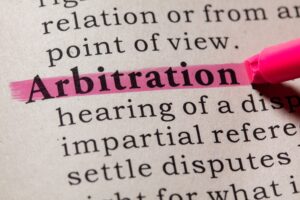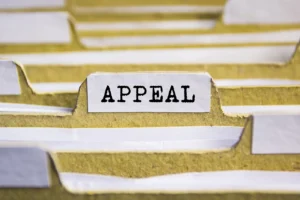
Arbitration as an Alternative in Family Law
Recently, we have had a number of cases where parties have good prospects to appeal, but a decision has been
Call us on
In a property settlement, all interests in property that both you and your former partner have must be identified and valued. This is the first important step in a property settlement.
When a piece of property is identified and valued it does not necessarily mean that the other party is entitled to a set percentage of that piece of property. The first step, in any property settlement, is simply to make sure that each party fully discloses all of their property and that there is a value either agreed or assigned to that piece of property through a valuation.

Many families, when they are happily together, are advised to put in place a Discretionary Family Trust. A party’s accountant, financial advisor and/or lawyer may provide sound advice to the parties (when they are happily married or together) that they should look at conducting their business or putting some assets in a Discretionary Family Trust. The Trust structure itself may afford tax advantages and/or protection against creditors.
However, when parties then separate there is often a dispute about how the assets of the Family Trust are treated.
The reason why there is some confusion and debate about this issue is because a Trust is not a legal entity and in the strict legal sense the property that the Trust owns is not property of the “husband and wife.” In other words, if the husband and wife conduct a business through a Family Trust structure then they do not personally own the business. Essentially, on a strict legal basis, the business that is run through the Trust is not the property of either the husband or the wife.
In a typical Family Trust, there is a Trustee Company which has duties as the Trustee to administer the Trust property pursuant to the terms of the Trust Deed and obligations at law. A typical Family Trust is set up usually for the benefit of what are known as beneficiaries of the Trust. These beneficiaries may include the husband, wife and other relatives including the children of the family. Distributions of income and capital can be made from time to time to the beneficiaries from the Trust property upon resolution (decision) of the Trustee. The Trustee of the Family Trust may be the husband or wife personally or typically a company controlled by either the husband or wife.
There have been many cases over the years where a party has sought to argue that the assets held in a Family Trust should not be included in a matrimonial property settlement. Those arguments have consistently failed and there are many cases decided by the Family Court and also the High Court that explains why assets within the Family Trust are indeed matrimonial property.
In a typical Family Trust, there is someone who has a power to sack the Trustee of the Trust. This position is usually referred to as the “appointor” or “nominator.” That person has a very wide power in that they can themselves sack a Trustee and effectively appoint another Trustee to administer the Trust. Therefore, if you think about it, that person could sack a Trustee and appoint themselves or another company (that they control) as Trustee of the Trust. They could then make decisions as to the distribution of income and capital that may be said to favour themselves or one class of beneficiaries over the other (although legally they should not do that).
Further, the High Court has said that when the property of the Trust has been built up over many years primarily through the direct and indirect efforts of the husband and wife, then effectively the assets of the Trust are matrimonial assets. Therefore, when looking at any Family Trust structure in a matrimonial property settlement, one should pay attention to the following key aspects:-
There are other indicia and factors that the Court will often look at in determining whether the assets of the Trust are effectively assets of the husband and wife.
If you have a case that involves substantial assets within a Family Trust, then you should seek advice from a Specialist Family Lawyer as to how the law may treat the assets of that Trust in the particular circumstances of your case.
Many families, when they are happily together, are advised to put in place a Discretionary Family Trust. A party’s accountant, financial advisor and/or lawyer may provide sound advice to the parties (when they are happily married or together) that they should look at conducting their business or putting some assets in a Discretionary Family Trust. The Trust structure itself may afford tax advantages and/or protection against creditors.

Recently, we have had a number of cases where parties have good prospects to appeal, but a decision has been

Recently, we have had a number of cases where parties have good prospects to appeal, but a decision has been

Recently, we have had a number of cases where parties have good prospects to appeal, but a decision has been

© 2024 Hartley Family Law – All Rights Reserved | Privacy | Terms & Conditions

The Privacy Statement of the Company is incorporated into these Terms and Conditions. The Company respects the privacy of all its customers and business contacts. The Company is subject to the requirements of the National Privacy Principles which are contained in the Privacy Act.
1. How is personal information collected?
Your name, email address and phone number are collected on the contact form to allow the Company to contact you.
If you email or phone the Company directly, then the Company may record your personal details.
Your personal information may be used to:
a) Improve service to you, the customer
b) The Company may use personal information about you for marketing and research purposes. If you do not wish this to occur, please contact us and we will ensure this does not occur
c) Your personal information is not disclosed to any organisation outside of the Company.
2. Will personal information be given to anyone else?
The Company does not sell or provide your personal information to any other company.
3. Security of personal information
The Company employees are required, as a condition of their employment, to treat personal information held by the Company as confidential, and to maintain the confidentiality of that personal information.
The Company protects the personal information it collects in a secure database.
4. Access and correction
You can access your data at any time by contacting the Company directly.
You also have the right to ask us to correct information about you which is inaccurate, incomplete or out of date.
We ask you to contact the Company by email or phone using the Company contact details if you wish to access or correct any of your personal details.
5. Online privacy issues
To the extent that this Privacy Policy applies to online privacy issues, it is to be read as forming part of the terms of use for our website. When you deal with the Company whether online or otherwise, the Company takes its privacy obligations seriously.
6. Additional privacy information and how to contact the Company
The Company may change its Privacy Policy at any time.
For further information about privacy issues and the protection of privacy visit the Australian Federal Privacy Commissioner’s website at www.privacy.gov.au. If you feel that The Company is not complying with this Privacy Policy, or if you have other privacy concerns, please contact the company.